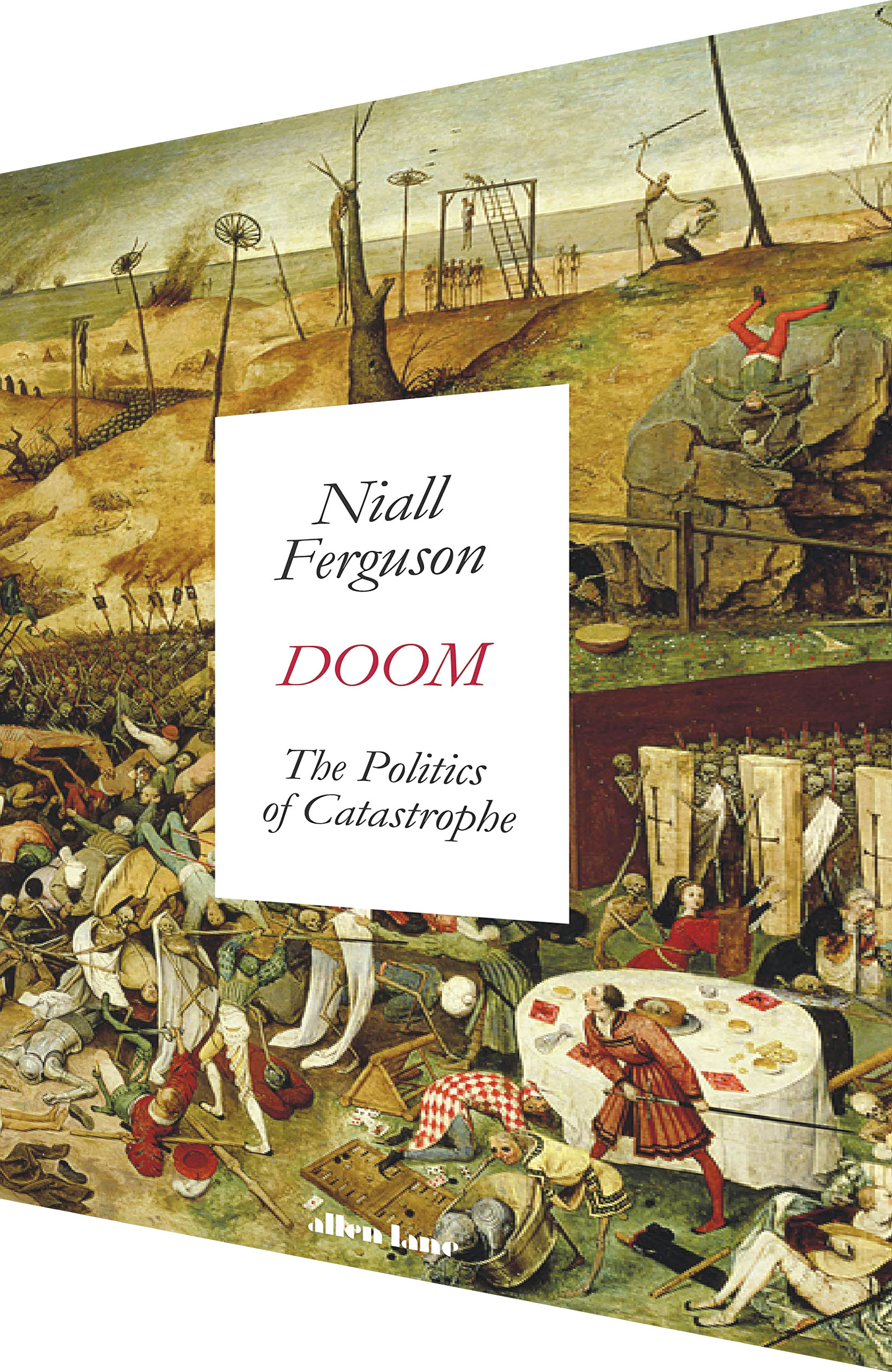 Doom: The Politics of Catastrophe
Doom: The Politics of Catastrophe
Niall Ferguson
Allen lane
Rs.770 Pages 476
Suraj Kumar Thube (The Book Review)
Niall Ferguson has a penchant for writing sweeping histories. Over the years, he has managed to cast his spell over a wide audience through what can broadly be called ‘popular history’. From empires and money to global leadership, Ferguson has enchanted his audiences by introducing them to newer albeit obscure topics. He might find it difficult, however, to repeat the trick with his new book, Doom: The Politics of Catastrophe.
While explaining the reasons for writing a history of catastrophes, Ferguson clarifies that this is not a history of the ongoing pandemic, but rather “a general history of catastrophe”. These include both natural and man-made disasters which straddle diverse categories like geological (earthquakes), geopolitical (wars), biological (pandemics) and technological (nuclear accidents).
Instead of shying away from framing natural and man-made disasters as separate entities, Ferguson focuses on the historical tussle between scientific progress and different types of catastrophes that rear their ugly heads periodically. As much as Ferguson attempts to create a compelling account of global catastrophes, an over-reliance on information, facts and figures leaves less space for robust argument.
In the introduction, the author confesses his own complicity by being a ‘superspreader’ in early 2020, when he was globetrotting to deliver lectures, attending conferences and corporate meetings. At the same time, he is quick to remind his readers about the ‘Cassandra effect’, wherein he subtly positions himself among the select few who “think they know the future (in this case, the ramifications of the pandemic) but cannot convince people around him”. With his trademark style of posing facts and hypotheses at the same time, Ferguson implores us to think of catastrophes as ‘gray rhinos’ (highly probable events), ‘black swans’ (surprising events) and ‘dragon kings’ (vast in magnitude). In his own words, “the history of disasters is a history of a poorly managed zoo of gray rhinos, black swans and dragon kings”.
Through the book, he obsesses over the micro details of each and every event. Large sections read like bloated biographical sketches of events, personalities and organisations that appear to be at best a critical appraisal of academic truisms like “how we must study the social and political aspects instead of narrowly focusing on the pandemic” and the fallacies of “cyclical theories of histories” among others.
There is no gainsaying that a focus on the interconnections of society, polity and the pandemic is crucial to understand the emergence and sustenance of a catastrophe in myriad ways. However, to use this statement as one of the principal arguments comes across more as a hackneyed hypothesis, neither a new nor an interesting ‘question’ to think about.
If this is how Ferguson struggles to bring any kind of novelty to his project, his assessment of the functioning of political machinery during a pandemic is dubious, if not an exercise in outright contrivance. As far as the current pandemic is concerned, he lays the blame on bureaucratic apathy in the ‘middle’ of the system. He labours more on scientific miscalculations (thereby holding scientific advisors and experts accountable) than on leadership decisiveness. Even if he reluctantly concurs with the growing realisation among the masses of Donald Trump and Boris Johnson being manifestly idiotic in their leadership roles, he reserves the maximum blame for the ‘system’.
Ferguson uses a contorted version of previous studies to deliberately suit his hypothesis. For instance, by briefly talking about Amartya Sen’s argument of how accountability of government matters in a pandemic, he is evasive over Sen’s more consistent stand, especially in the recent past, of holding rising authoritarian leaders responsible for contemporary disasters. By arguing that we need to move beyond “populist nemesis reasoning”, Ferguson creates a false binary of the system on the one hand and the individual at the helm of affairs at the other.
This tendency to hypothesize about the past with the benefit of hindsight continues when he attempts to question the rationale of lockdowns without offering any substantial analysis of his assertions. As much of the data, models and theories are used to diagnose the western world, most readers would be hard-pressed to understand how they work out in the global South where countries like India and Brazil still continue to show enormous fluctuations in terms of the severity of the pandemic. As Ferguson desperately tries to make his personal diary look more like an erudite account of a public intellectual, we are given another ‘Cassandra moment’ of a possible intensification of a Cold War brewing between the US and China. How this realpolitik is exactly related to the original premise of writing a history of catastrophes is anybody’s guess.
Like the unexplained quotations at the beginning of each chapter, Ferguson believes that an onslaught of information is sufficient for an understanding of catastrophes. Bombarding readers with obscure facts and terminology might be entertaining, but it does precious little in expanding the horizons of critical thinking.



























